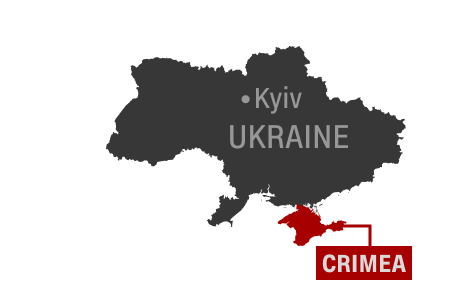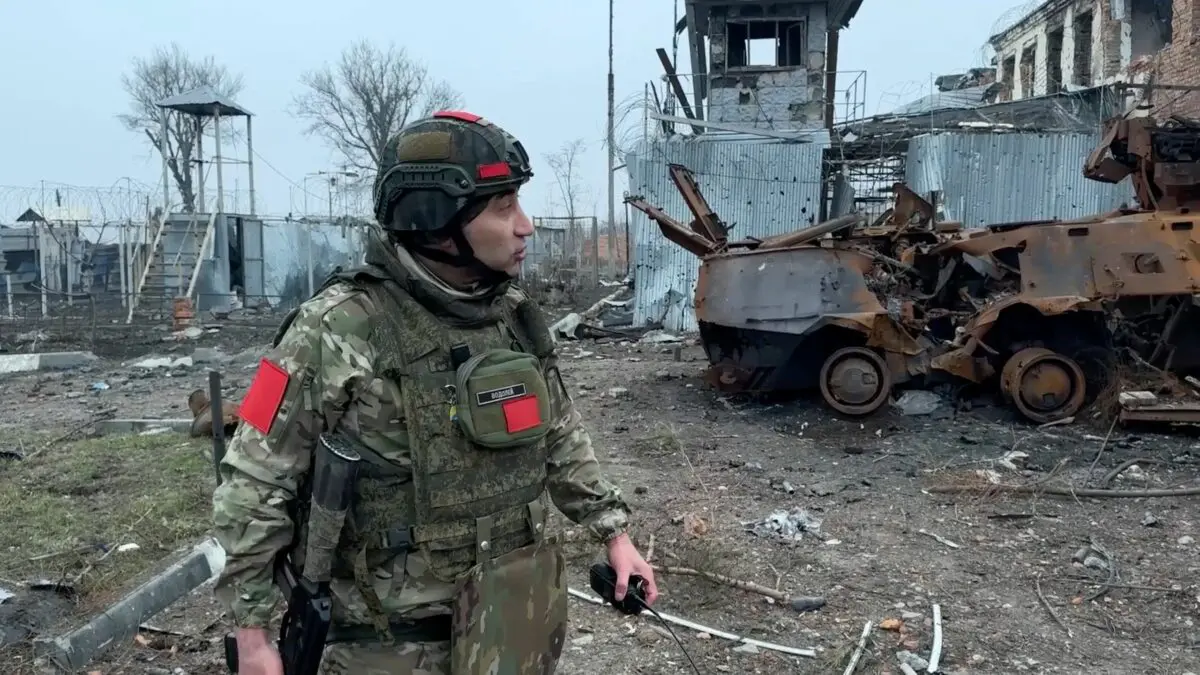As the conflict between Russia and Ukraine continues into its 1,133rd day, significant developments unfold on both military and diplomatic fronts. Amidst ongoing battles, geopolitical strategies, and international support, the situation remains fluid and complex. In the following sections, we will delve into the key events of this crucial period, providing insight into what has transpired as well as the broader implications for the region and the world.
Military Engagements and Strategic Movements
Recent reports from Ukraine highlight a notable change in the landscape of the conflict. For the first time since December, the Ukrainian Air Force declared that no drone attacks occurred overnight. However, tensions remain high as Russia initiated two cruise missile launches that were successfully intercepted. The absence of drone assaults raises questions about Russia’s current military strategy and objectives.
According to Ukraine’s military assessments, over 10,700 combat and decoy drones have been deployed by Russia since the beginning of the year. The intention behind these operations has been to challenge Ukrainian air defenses significantly. The intensity of these engagements is seen in the ongoing battles around the eastern Donetsk region, particularly in Rozlyv, where the Russian Ministry of Defense claimed control of the village after multiple attacks.
The reported territorial gains made by Russian forces are detailed by DeepState, a Ukrainian monitoring blog tracking the 1,000 km front line. Their observations note advances near Rozlyv while battles continue around the vital town of Toretsk. Ukrainian losses have been reported, including one civilian casualty from Russian shelling in Zaporizhia, demonstrating the ongoing humanitarian impact of military actions.
In the context of these combat developments, the following points outline key military engagements:
- Ukraine’s air defense successfully intercepted two Russian cruise missiles.
- Over 10,700 Russian drones launched against Ukraine since January.
- Control claimed by Russian forces over the village of Rozlyv.
- Continuous fighting reported in the eastern regions, notably in Toretsk.

With Russia advancing 240 square kilometers into Ukrainian territory throughout March, this change marks a decline for the fourth consecutive month, according to the Institute for the Study of War (ISW). The Russian offensive, which reached a peak of 725 square kilometers in November 2024, is gradually losing speed. Ukraine continues to respond resiliently, engaging and preparing its military forces for the challenges that lie ahead.
The regional dynamics are further complicated by reports of emerging threats from Ukrainian drones damaging residential buildings in Taganrog, Russia, leading to evacuation efforts for local civilians. The ripple effects of this conflict extend beyond conventional combat, impacting daily life for countless civilians on both sides.
Diplomatic Efforts and International Influence
The deadlock in ceasefire negotiations reflects the complexity of resolving the conflict. Recent statements from German Foreign Minister Annalena Baerbock emphasized the critical role of European allies in supporting Ukraine amid stalled talks between the U.S. and Russia. This highlights a growing realization that external diplomatic efforts are essential in facilitating any potential peace accords.
The ongoing hostilities have also drawn mixed reactions from both the U.S. and Russia. According to U.S. Department of Defense sources, officials have discussed the likelihood of making no significant progress on a peace deal in the coming months, leading to adjustments in their approach towards both Kyiv and Moscow. Furthermore, half of the U.S. Senate, consisting of 25 Republicans and 25 Democrats, has united to propose sanctions against Russia should they not engage in genuine negotiations.
This diplomatic tension is manifested in various statements from leaders on both sides of the aisle. While Ukrainian President Volodymyr Zelenskyy continues to press for sanctions against Russia for purported violations of ceasefire agreements, the Russian Ministry of Defense has countered by accusing Ukraine of launching drone attacks on its territory.
The emphasis on diplomatic resolutions is underscored by the ongoing discussions related to the involvement of NATO member states and potential deployment of foreign troops to Ukraine as part of broader security guarantees. The nuances surrounding these discussions paint a picture of a complex geopolitical context, where alliances and strategic interests are being reassessed.
In light of these diplomatic maneuvers, the following aspects emerge:
- The deadlock in ceasefire negotiations underscores the urgent need for diplomatic intervention.
- Germany’s commitment to supporting Ukraine through military aid and sanctions.
- The proposal of new sanctions by the U.S. Senate aimed at Russia to enforce accountability.
- Ongoing discussions involving NATO regarding military support for Ukraine.
International Support and Aid Mobilization
As Ukraine continues to navigate the challenges posed by the ongoing conflict, international support remains essential. The delivery of financial aid plays a critical role in sustaining military efforts and humanitarian responses. Kyiv announced that the European Union has provided an additional $3.8 billion in financial support, reflecting the commitment of international partners to bolster Ukraine’s capabilities.
Ukrainian President Zelenskyy remains optimistic about securing additional military assistance, specifically requesting German Taurus cruise missiles, which have previously faced opposition from outgoing Chancellor Olaf Scholz due to concerns about escalating tensions. The expected meeting among military officials from various allied nations aligns with Ukraine’s goal of maximizing international military support.
The following insights illustrate the broader picture of international aid mobilization:
- The European Union’s commitment to providing substantial financial support for Ukraine.
- Negotiations for military aid, including discussions over specific weapon systems.
- Collaboration among ally nations to strategize military support and resource allocation.
- Calls from Ukraine for strengthened security guarantees to protect its territorial integrity.

| Source of Aid | Amount ($ billion) | Purpose |
|---|---|---|
| European Union | 3.8 | Financial support for military and humanitarian needs |
| U.S. Defense Commitments | Undisclosed | Potential military supplies and equipment |
| Other NATO Members | Varied | Military support and training programs |
As the landscape continues to evolve, Ukraine’s ability to leverage international support will be pivotal in its ongoing quest for self-defense. The various forms of assistance will help to stabilize the nation and provide the necessary resources to confront the military challenges posed by Russia.
Economic Implications and Sanctions Environment
With the conflict’s toll reaching various facets of life, the economic ramifications are starting to crystallize. Sanctions against Russia have significantly affected its economy, leading to remarkable developments such as the increase in Russian assets frozen in Switzerland, which rose by nearly $2 billion over the past year to surpass $8 billion. This indicates the growing effectiveness of international sanctions aimed at crippling Russia’s economic capabilities.
In contrast, Ukraine’s economy is feeling the strain due to the ongoing conflict, with the loss of power infrastructure in regions like Kherson leading to tens of thousands of residents being left without electricity. These events contribute to an increasingly dire humanitarian situation within Ukraine, with Ukrainian officials highlighting urgent needs related to sustenance and energy.
The impact of these economic trends can be summarized in the following points:
- Significant increase in frozen Russian assets as a direct result of sanctions.
- The ongoing humanitarian crisis in Ukraine as a consequence of damaged infrastructure.
- Challenges in economic stability for both nations as the conflict persists.
- The potential for further sanctions that may affect global energy markets.
| Economic Aspect | Russia | Ukraine |
|---|---|---|
| Frozen Assets | $8 billion | N/A |
| Population Affected by Power Outages | N/A | Approximately 50,000 in Kherson |
| Projected Economic Growth | Negative projections | Severe contraction |
The interplay of economic sanctions and military engagements presents a complex scenario, with both Ukraine and Russia navigating through unprecedented challenges that will have lasting implications for their respective futures. The road ahead remains uncertain, with ongoing discussions about diplomatic resolutions coinciding with fierce military confrontations.
Source: www.aljazeera.com
I’m Mikael, a 35-year-old Gossip Gravity Creator. I’m passionate about curating captivating content that sparks conversations and ignites curiosity. Join me on this exciting journey as we explore the fascinating world of gossip and trends together!



